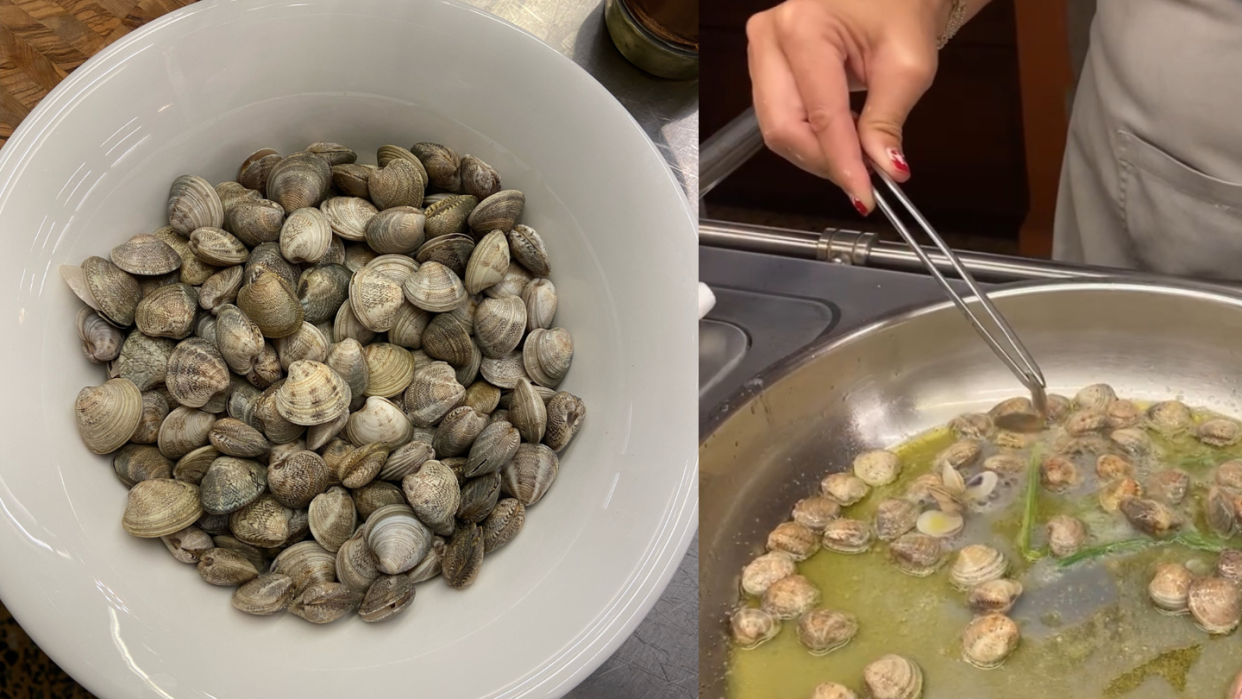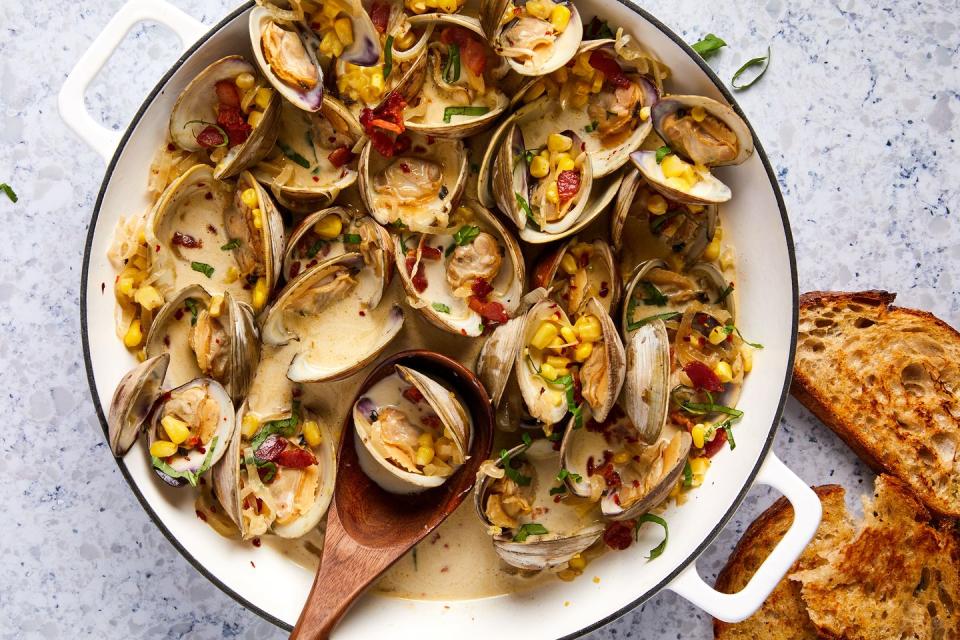Everything You Need To Know About Clams, According To An Italian Chef

Seafood comes in all shapes and sizes. And while it's impossible to pick a favorite, clams have a special place in our hearts. We love celebrating the adorable bivalves by throwing them on the grill, stirring them into a creamy chowder, or channeling our inner White Lotus with a plate of linguine and clams. But the prospect of cooking them yourself can be a little daunting.
Clams are alive when you buy them, which can make some home cooks a bit squeamish. They’re also a relatively delicate protein that can go bad fairly quickly. When they’re not cooked properly, clams can be gritty, rubbery, or even full of disease-causing bacteria.
But that doesn’t mean you should swear off of mollusks entirely. Just like with beef or chicken, clams have their own unique preparation instructions to ensure that they taste as delicious as possible.
We traveled to Lake Como with our friends at Imago Artis Travel to learn from some of Italy’s most distinguished chefs. And at Villa Passalacqua, Executive Chef Alessandro Rinaldi gave us the rundown on clams—from buying them to cleaning them to serving them.

How To Buy Clams
Whether you’re buying Manila or Littleneck, you should always start shopping for clams by choosing a reputable supplier. Mislabeled seafood is rampant across the United States, so it’s more important than ever to find a vendor you can trust. A good seafood salesperson should be able to tell you exactly when and where your clams were harvested.
Rinaldi says you can also lean on visual clues to determine the quality of clams. He says that a fresh clam shouldn’t have a strong smell, but rather a faintly oceanic aroma. The shells should be closed. If any rogue clams are slightly open, gently tap the shell to test them. A dead clam will stay ajar, while a living one will retreat and close its shell. You should avoid buying any clams with cracked shells.
How To Clean Clams
Most of the time, store-bought clams will have already received a quick clean. But if you plan to include the shells in your finished dish, it’s worth giving them a little extra TLC. A good scrub helps to release any remaining dirt on the exterior of the shell. And before you cook your shellfish, it’s important that you soak them in salted water.
This process, also known as purging, gives clams the chance to spit out any lingering sand and grit that may be stored within their shells. They should soak for a minimum of 20 minutes, but can hang out in the salt water for up to an hour. You may have heard of some cooks adding cornmeal, flour, or black pepper to the salt water solution to encourage purging. But Rinaldi says that’s not necessary—clean, salty water is more than enough.
How To Cook Clams
The cooking time and method for your clams will vary depending on the individual recipe and the size of your shellfish. But the best way to tell that a clam is fully cooked is by the opening of the shell. Just like popping corn kernels, this can happen at different times even in the same pot.
Certain larger clams can withstand the extra heat in the time it takes for the remaining mollusks to open. But you also run the risk of your clams overcooking, which can leave them chewy and rubbery. Rinaldi prefers to remove individual clams as they open and transfer them to a separate bowl while the others continue cooking. It’s a more meticulous method, but it does ensure that each and every clam is perfectly cooked.
Unless you’re extremely lucky, you’ll likely end up with a few clams that don’t open at all. That means that they were dead before they were cooked and should be discarded. What you shouldn't throw away, however, is the cooking liquid. Each and every clam contains concentrated, briny liquid that's known as liquor (don't worry, there's no alcohol involved).
As you cook your clams, the liquor releases and can be used as a savory, flavor-packed foundation for any soup or sauce. In fact, Rinaldi's rendition of linguine and clams features the concentrated liquor as the primary ingredient for the sauce—not white wine or lemon juice.
You Might Also Like

